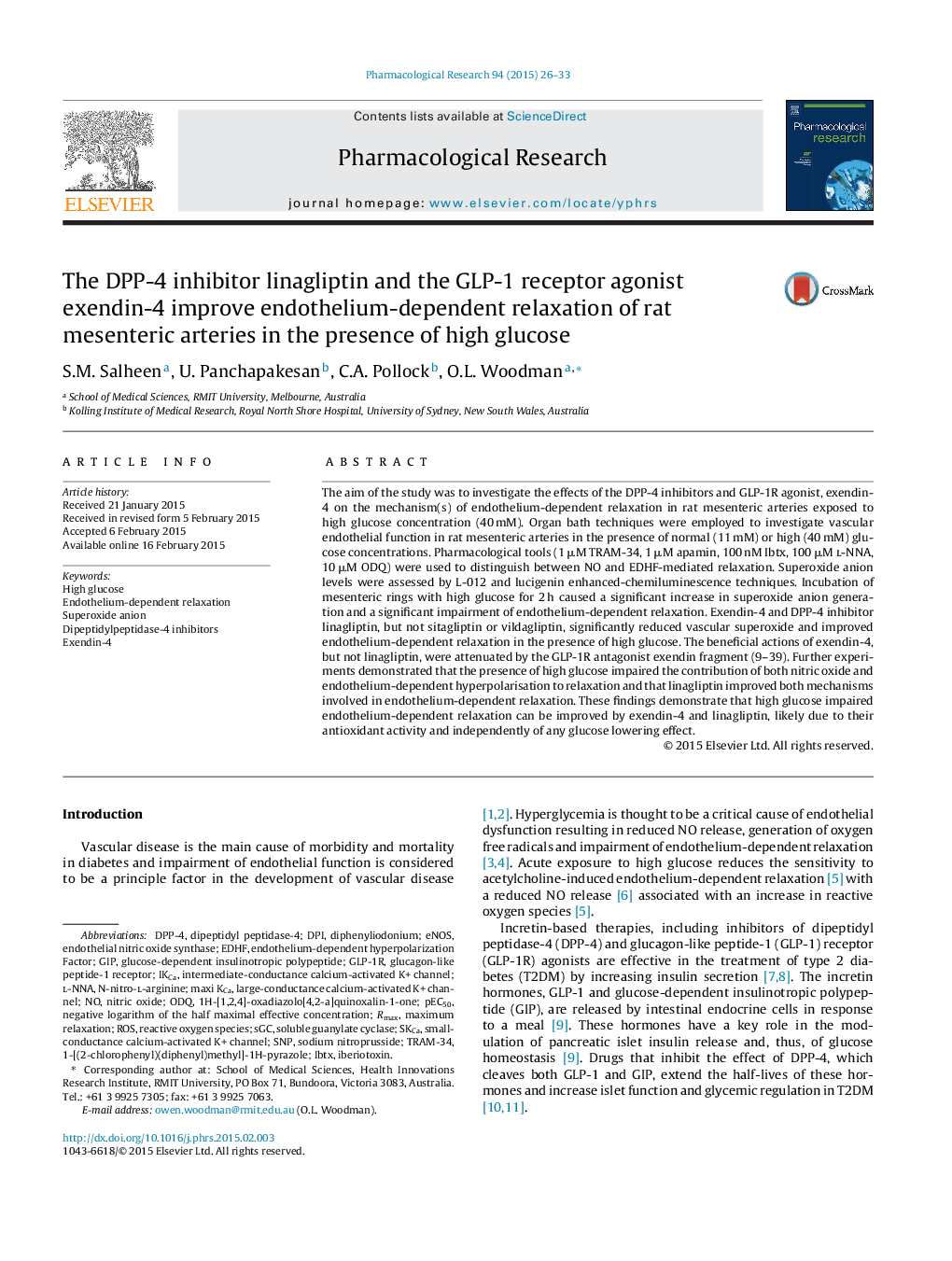| Article ID | Journal | Published Year | Pages | File Type |
|---|---|---|---|---|
| 2562091 | Pharmacological Research | 2015 | 8 Pages |
The aim of the study was to investigate the effects of the DPP-4 inhibitors and GLP-1R agonist, exendin-4 on the mechanism(s) of endothelium-dependent relaxation in rat mesenteric arteries exposed to high glucose concentration (40 mM). Organ bath techniques were employed to investigate vascular endothelial function in rat mesenteric arteries in the presence of normal (11 mM) or high (40 mM) glucose concentrations. Pharmacological tools (1 μM TRAM-34, 1 μM apamin, 100 nM Ibtx, 100 μM l-NNA, 10 μM ODQ) were used to distinguish between NO and EDHF-mediated relaxation. Superoxide anion levels were assessed by L-012 and lucigenin enhanced-chemiluminescence techniques. Incubation of mesenteric rings with high glucose for 2 h caused a significant increase in superoxide anion generation and a significant impairment of endothelium-dependent relaxation. Exendin-4 and DPP-4 inhibitor linagliptin, but not sitagliptin or vildagliptin, significantly reduced vascular superoxide and improved endothelium-dependent relaxation in the presence of high glucose. The beneficial actions of exendin-4, but not linagliptin, were attenuated by the GLP-1R antagonist exendin fragment (9–39). Further experiments demonstrated that the presence of high glucose impaired the contribution of both nitric oxide and endothelium-dependent hyperpolarisation to relaxation and that linagliptin improved both mechanisms involved in endothelium-dependent relaxation. These findings demonstrate that high glucose impaired endothelium-dependent relaxation can be improved by exendin-4 and linagliptin, likely due to their antioxidant activity and independently of any glucose lowering effect.
Graphical abstractFigure optionsDownload full-size imageDownload high-quality image (205 K)Download as PowerPoint slide
